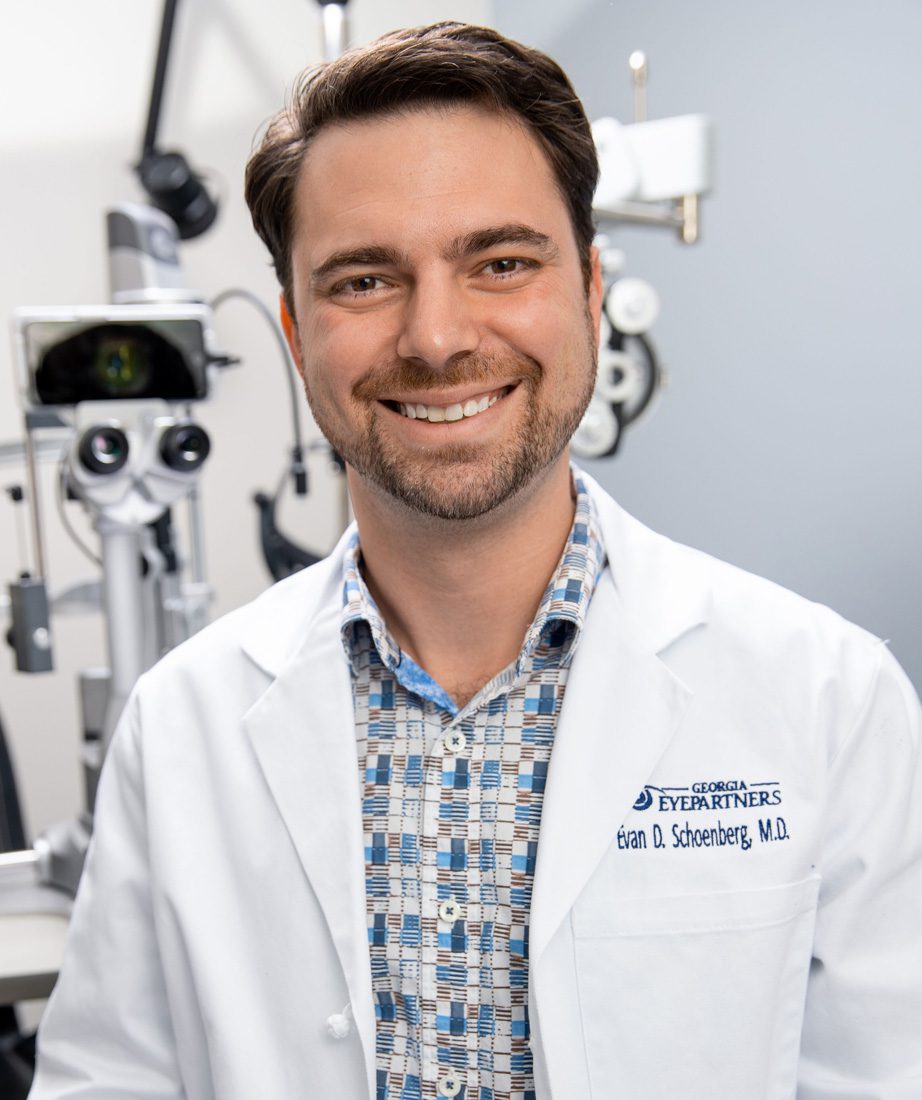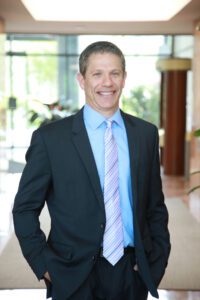Cutting-edge technology lets patients ditch their glasses.

Dr. Evan Schoenberg knows plenty of people who can’t find their way out of bed in the morning without first grabbing their glasses. But he has a solution for that.
“A big part of what I do is getting people out of glasses and contacts,” he says. “It’s what I feel very passionate about. Being able to just see is so liberating, and that’s why ICL is one of the most important tools in a big toolbox.”

An “ICL” is the implantable collamer lens that Schoenberg and his partner, Dr. Andrew Feinberg, can place just below the eye’s surface to correct nearsightedness and nearsightedness with astigmatism. Part of the Georgia Eye Partners, the two are among 600 doctors in the country and the first in Georgia trained to perform the procedure named EVO (shorthand for evolution). Though it’s been accepted in Europe for some time, it was approved in the U.S. about 15 years ago but has yet to become as well-known. One reason may be because information about the procedure and its effectiveness hasn’t been widely distributed; another may be that as an elective, it’s usually not covered by insurance companies. And more people are familiar with a similar procedure, LASIK.
“The closest competing procedure is LASIK, which has been around a lot longer,” Feinberg says. “EVO is an untapped, under-recognized procedure that we’re working diligently to get the word out about.”
Both doctors agree EVO has distinct advantages when it comes to corrective surgery. At the top of the list is the ability to ditch those glasses and lenses.
“EVO has opened the door for people who didn’t think they could ever get away from glasses or contacts because they were told they weren’t good candidates for LASIK, usually because they’re too young, and their eyes haven’t stopped changing,” Schoenberg says. “But the criteria are totally different from LASIK. And for some people, it’s necessary. What if a lens falls out or you can’t find your glasses in an emergency?”
Feinberg touts EVO’s fast and easy recovery that usually has patients up and around the next day. Also, the implanted lens is designed to stay in the eye indefinitely but is removable, if need be. That’s a distinct difference from LASIK that causes permanent changes to the cornea, he says.
And then there’s the COVID factor.
“We saw a big uptick in patients after COVID because a lot of people were frustrated by wearing glasses that fogged up with masks,” Schoenberg says. “And some thought, ‘Maybe I don’t want to be putting my fingers in my eyes [to wear contact lenses].’ People think that surgery is a big risk, but three years of wearing contacts daily has a higher risk of infection.”
Making it easier for people to see clearly is extremely satisfying, Schoenberg adds, who describes his family as “very visual” with a grandmother who was a professional artist and a father who was a physician. “I’m not an artistic person, but I get to use my hands and create in a way that works with my training and ability,” he says. “I’m also a futurist, so I always wanted to do something detail oriented and technically advanced. The fact that I get to stay on the cutting edge keeps me excited. And I still wake up and think how cool it is that I can see.”
GEORGIA EYE PARTNERS
404.531.9988
gaeyepartners.com
Atlanta-based writer and editor contributing to a number of local and state-wide publications. Instructor in Georgia State’s Communication department and Emory’s Continuing Education division.











